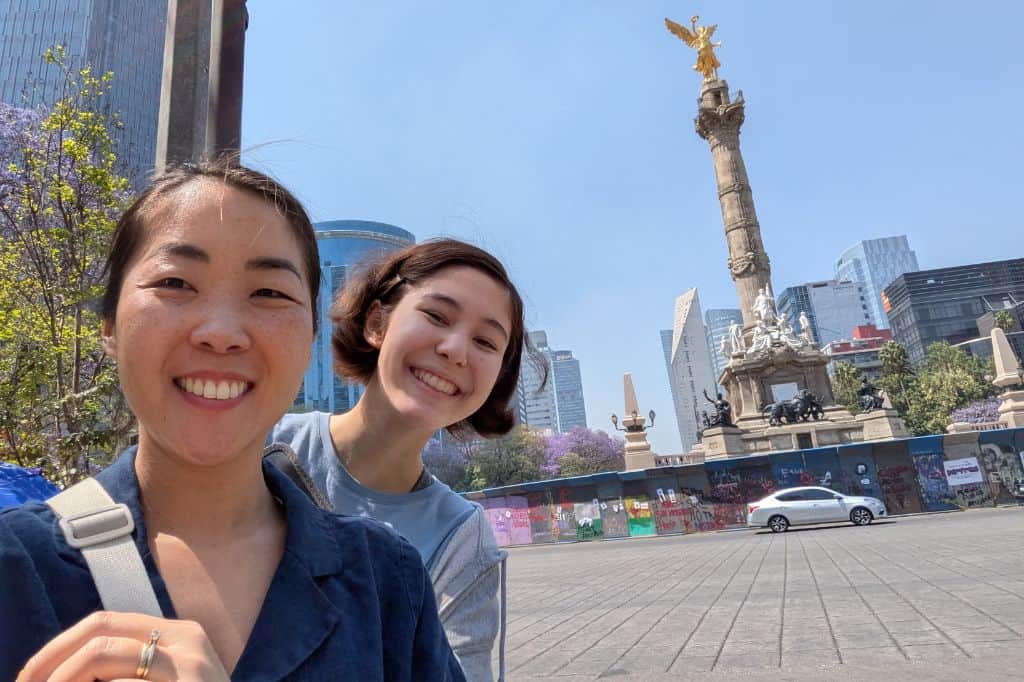
What started as a quick trip to Mexico City turned into a brand-new chapter for Army veteran Heather Bruno and her family.
They had been planning a move to Portugal, but a last-minute visit to Mexico changed everything. A few days of exploring neighborhoods, checking out schools, and tasting local dishes convinced Heather and her husband that Mexico had everything they needed, but with fewer hurdles to navigate.
In this personal Q&A, part of our Veterans Living Overseas Interview Series, Heather shares why Mexico City was the right fit, how she secured residency, and what it’s like to live in one of the most vibrant and walkable neighborhoods in the city.
Why did you move to Mexico and how did you choose your city?
I had originally planned to move to Portugal, but this was during the pandemic when Americans couldn’t enter Europe without a visa. I was building our embassy packet for Portugal, but it all became very expensive when trying to complete a Portuguese checklist, sight unseen.
| Related Reading: This Veteran Moved to Portugal on the Popular D7 Visa
Expecting that after moving to Portugal, I wouldn’t be on this hemisphere for a while, in late 2021 I planned a short trip with my husband to visit Mexico City. It was a place I had only been to once and my husband had never seen.
By the end of our trip, I knew that Mexico City had everything I was looking for in Portugal, but a lot more conveniently located and with fewer hoops to jump through.
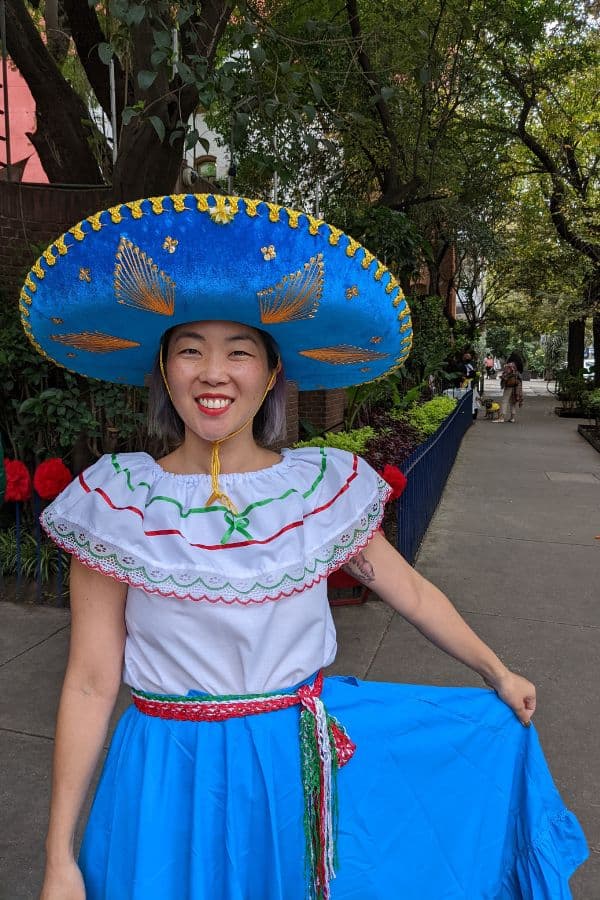
It was really during a food tour that we were exposed to our current neighborhood of Condesa. On a previous trip, I had only seen Centro and Xochimilco. And on our current trip, we were staying at a hotel in Juarez.
The food tour had us meet at an ice cream shop in Condesa, on the iconic Avenida Amsterdam next to Parque Mexico. During the tour, I asked the tour guide how much it would cost to live in the neighborhood, and she said between $700-1500 USD, which was within our budget. She even walked me around to a couple Montessori schools, one in which I ended up enrolling two of my kids. We moved 3 months later.
What type of residence visa do you have and what are the main qualifications?
We are on the Financial Solvency visa. We needed to show investement or bank accounts with a monthly ending balance equal to at least 5,000 days of the current general minimum wage in Mexico City. With the July 2025 exchange rate, that’s equal to approximately $73,235 USD but in 2022 it was less.
To qualify, I was able to use my Thrift Savings Plan (TSP) balance, even though it was my 35th birthday the day I applied for my visa, much younger than retirement age. If you have dependents, you need to show a balance of an additional $1,465 USD per dependent. My TSP balance was enough.
I wasn’t awarded VA disability until April 2022, so I didn’t use that compensation as proof of income.
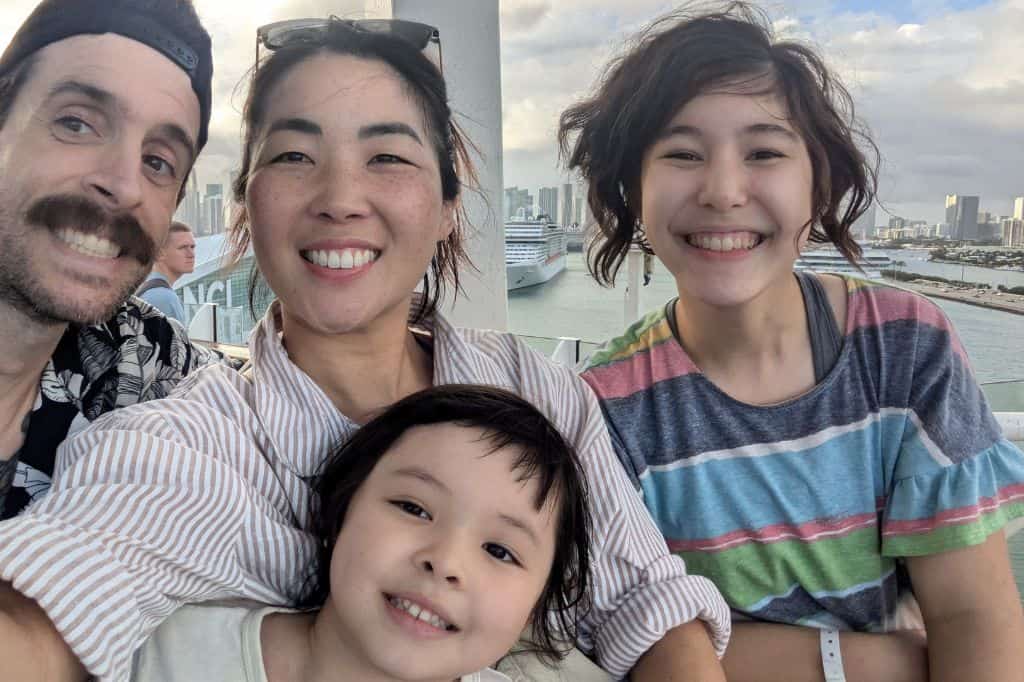
Briefly explain the process and timeline for moving to Mexico.
Before we applied for our visa, we had already decided we were moving. We sold our house and most of our possessions in November 2021 and moved into a $2,000/month Airbnb.
In December 2021, I secured an appointment at the Mexican Consulate in Austin for 3 January. Our total time in the building was only 2 hours.
We flew to Mexico City from Dallas on January 15, 2022 with 11 bags and a large dog. I was still on terminal leave from the Army. My last official day on active duty was 31 January 2022.
Do you or your husband work?
We consider ourselves retired. We live off VA disability compensation (we are both rated 100% permanent & total).
What did your kids think about moving to Mexico, and how did they adjust?
When we moved, my kids were ages 2, 10, and 16.
They didn’t have any major feelings about moving to Mexico. They had been expecting a move overseas to happen soon. And they didn’t have any attachment to their life in Killeen, Texas, either since the pandemic had pretty much ruined their sense of normalcy or any expectations for a normal school experience.
My 16-yr old son was already attending online school through K12 and prior to moving, he was attending his local school’s ad hoc online program. He had to fly back to Texas for standardized testing. He has since graduated and now attends the University of Texas in Dallas.
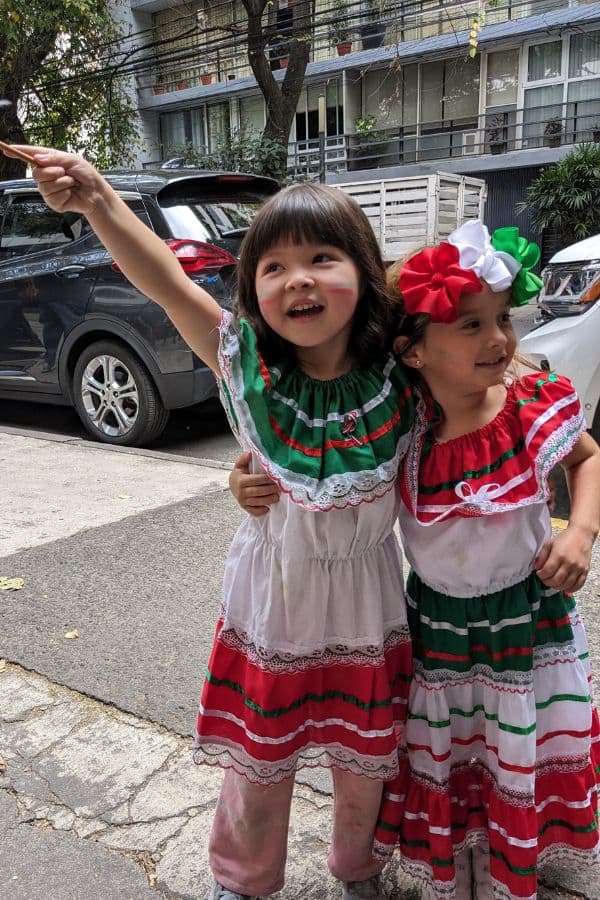
My two younger kids were enrolled into the local private Montessori school that went from age 1 to 6th grade. Since it was the end of the pandemic, we basically just reached out to a couple of schools, and whichever ones contacted us back, we toured. We only toured three schools before we decided. Mainly, we chose the one closest to our apartment.
My 2-yr old picked up Spanish very quickly and now, at 5, is completely fluent.
My 10-yr old didn’t pick up Spanish as quickly. I think it’s due to her age when she started learning, and the fact that all the kids in her class knew English and would translate Spanish for her.
Now she has a weekly Spanish tutor and is making decent progress. However, she still needs a bilingual school and will not become fluent enough for a fully Spanish-speaking school.
There are fewer options for bilingual schools as you go up in grade, and the options that remain are expensive in the high school years. It’s not ideal but I’d rather my kids have this situation than attend school in the States.
Do you and your husband speak Spanish? If not, is it difficult to navigate daily life?
My Spanish is not good. My husband has managed to pick it up, but he has an aptitude for languages. In his Army job, he learned French and Arabic. I, however, have no aptitude for languages. While stationed in Korea, as a Korean American, I didn’t pick up any Korean.
In Spanish, I can get the gist of a conversation and handle basic transactions, like ordering food or buying things at a market. I can’t have a full conversation.
Regardless, it’s not difficult to navigate daily life but sometimes I miss small talk. When I’m in the States, for the first couple days, I’m chatting up everyone to get the small talk out of my system.
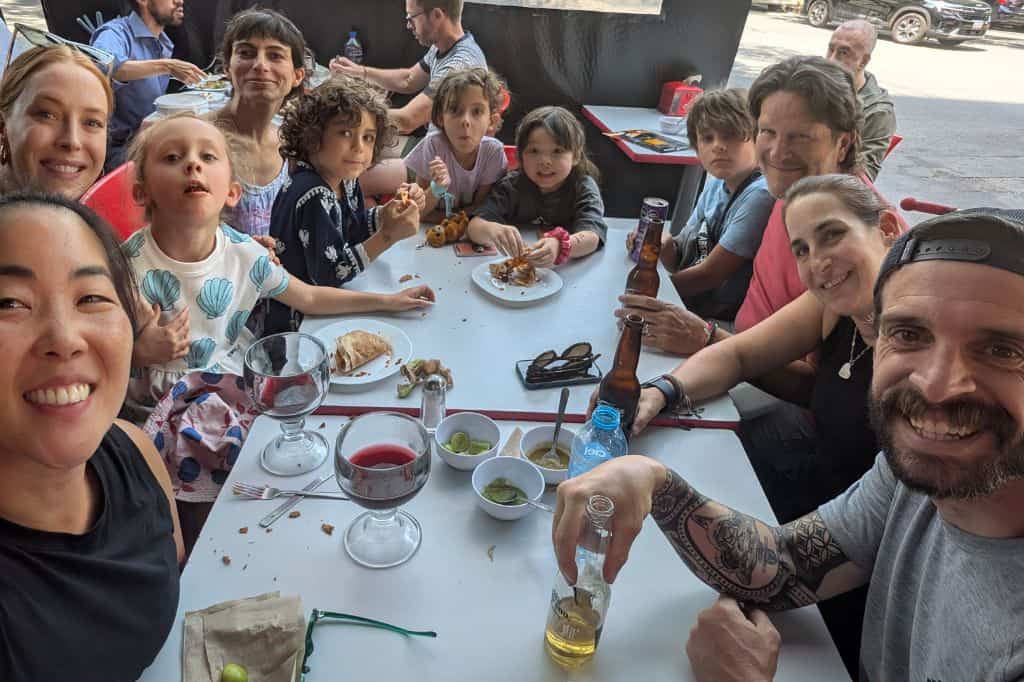
How does the cost of living in Mexico City compare to the U.S.?
Cost of living can vary greatly depending on which neighborhood you live in. We live in one of the most expensive neighborhoods and our rent for a 3-bedroom, 2-bathroom apartment is $27,000 MXN, or $1,350 USD.
Utilities vary depending on your neighborhood, with richer neighborhoods paying more. Our gas is billed monthly and costs us about $40 USD. Electricity is billed every two months and costs us about $80-100 USD per billing. I’m not sure why our electricity is so high in our current apartment because it used to be about $15 for two months in our last apartment.
Fiber internet costs about $35 USD and our cell phones are $10 each per month.
Food can be expensive depending on the type of food you expect to cook. We manage to spend about $1,000 per month on groceries and eating out. My husband cooks the majority of our food from scratch, which saves us a lot over buying convenience foods.
When we first arrived, we used to eat out a lot and order Uber delivery. It’s easy to spend a lot of money at the beginning, when everything feels relatively inexpensive compared to the U.S.
Restaurant prices vary greatly and one could easily spend $200 USD for a super nice dinner out with a family. But this dinner will have excellent service with multiple servers waiting on you, fancy cocktails and mocktails, and a ludoteca (play area) with nannies to watch the kids, including dress up and face painting.
Nowadays, we just eat at a local taco spot that has 2 for 1 al pastor tacos on Tuesdays and $25 peso beers. This makes tacos $0.50 USD each and beers a bit over a dollar. For the four of us to eat as much as we want, drink all we want, and order some full-priced appetizers, we spend about $15-20 USD.
For transportation, we mostly walk everywhere. I recently started using the train a lot, which costs $0.25 USD per ride. I also use the city bike share program which is $27 USD per year.
We purchased a couple electric scooters for $350 USD each. We don’t hesitate to use Uber for longer distances, but a ride to the airport, for example, is usually less than $10 USD.
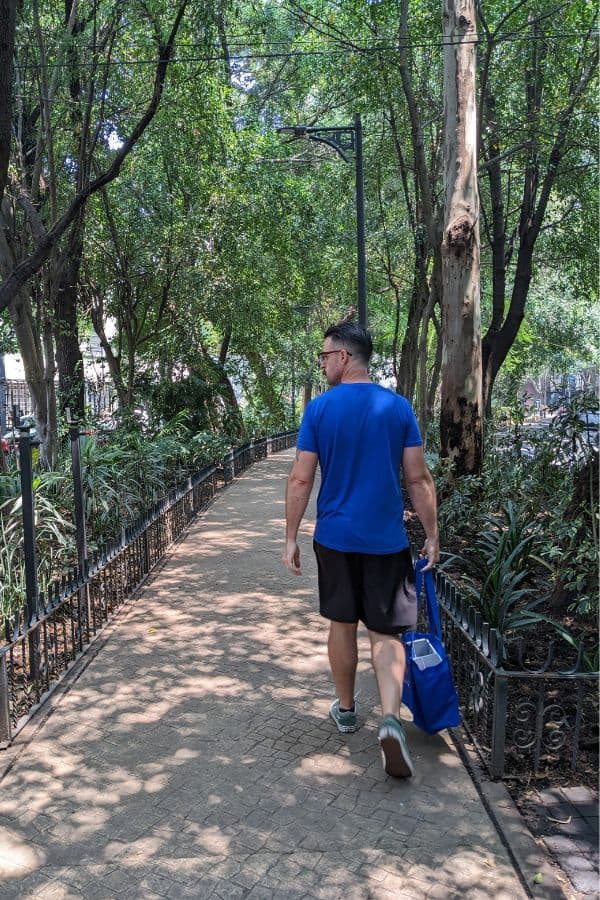
How is the medical care in Mexico City?
We pay out of pocket for our medical care and the private care we have received is excellent.
A pediatrician’s visit to our apartment costs $100 USD and is less if we go to their office. My husband recently had a bilateral hernia surgery and it only cost us around $2,000 USD.
When I first arrived, I was getting a lot of chiropractic care, which was $25 USD per visit. A dental cleaning is about $45 USD.
I know there are cheaper places for all the healthcare I’m listing, but this is what we pay and are ok with those prices. The cool thing is that we can send WhatsApp messages directly to our practitioners.
Tell us about daily life in Mexico City!
My life in Mexico City is beautiful. Every day is a perfect spring day. We usually walk our youngest daughter to school, just three blocks away, and then my husband and I focus on our hobbies until it’s time to get my daughter from school.
I joined the International Women’s Club of Mexico City, so I do a couple weekly activities with them, like pickleball and mahjong. I also play pickleball with another local women’s group that is only a couple blocks from my house.
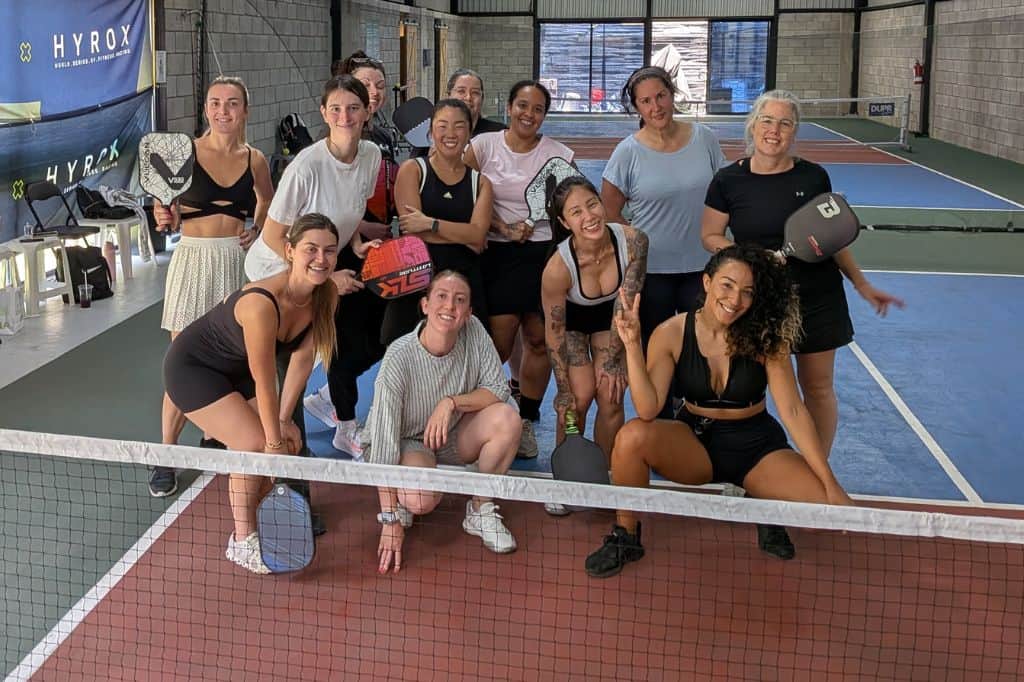
The majority of the women I meet through these groups are either spouses of diplomats or corporate expats who speak English, or they’re local Mexicans who are fluent in English.
In the afternoon, we walk to pick up my daughter from school and then later on, take her to many activities. My kids are in tennis, gymnastics, ballet, swimming, art, Spanish tutoring, karate, and music.
When we were in the States, most activities like this were either out of our budget or the transportation between home and activities would have been too much of a burden. Now, everything is a 15-minute or less walk away. The most expensive activities are $100 USD per month but the majority are around $50 or less.
My older daughter usually rides her scooter to and from school and walks to her activities alone. Some people think that’s too dangerous, but for us, we feel incredibly safe here. For peace of mind, I’m able to track her location using the Life360 app.
I’m also one of several admins of the Mexico City Super Moms Facebook group. I like helping incoming moms find their community resources, like schools, babysitters, and pediatricians.
What do you like about living in Mexico?
My absolute favorite thing about living here is the climate. It’s usually about 70° F and rains half the year but only for a short time in the afternoon, which keeps the air cool and the skies clean.
The climate is so mild that homes here don’t have any air conditioning or heat. There are only a couple weeks in the year that warrant the use of a space heater. And when it’s hot, usually March-May, we just use small fans.
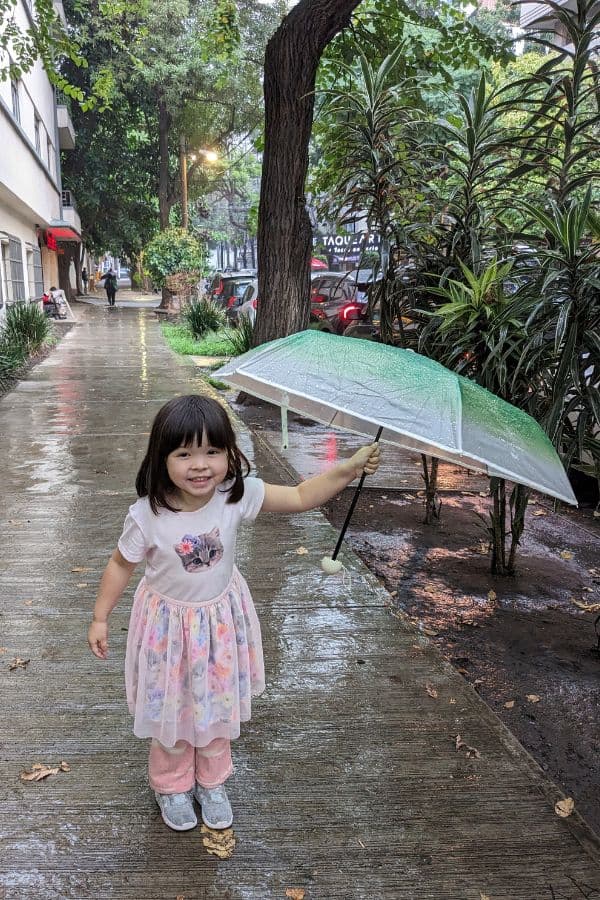
I also enjoy the walkability of my neighborhood. The density of the city allows for so much convenience.
Everything is available for delivery, and many aesthetic services are offered in your home. You can even have your laundry picked up if you want. If you need a pharmacy, fresh tortillas, groceries, dry cleaners, or any other service, they’re just a couple blocks away.
In the mornings, every corner has someone selling coffee, cold pressed juice, tamales, etc. Every corner, every morning. There is constant economic activity. In the States, we would need to drive to reach everything, and it’s all 20 minutes away or more.
What are some of the challenges of living in Mexico?
The hardest part about moving to any country is the difficulty communicating if you don’t speak the local language.
Making friends is quite easy here because the other immigrants are usually like-minded and eager to make friends. Unfortunately, the foreigner population is transient. For example, a lot of my friends moved away in 2023 during the big tech layoff.
Certain things cost more in Mexico, like consumer goods. Our Ikea is 20% more expensive than in the U.S. and the same can be said for all U.S. or name brands. Products on Amazon Mexico usually cost more than on Amazon U.S. Asian groceries are also expensive.
Other than that, I find Mexico City to be a very easy and convenient place to live.
Do you feel safe living in Mexico?
I feel very safe here, much safer than in the U.S. While there’s press about cartel violence, I don’t experience any of that where I live and I don’t worry about gun violence at all.
The only local threat, for a while, was a homeless American woman from Colorado who used to threaten people and dogs with a knife when they walked by her. She has since been deported.
I also don’t worry about pickpocketers or muggings. There are people who will steal your purse or bag from your cafe chair if you’re not looking, but it’s not common enough where you need to stay on constant high alert.
I also feel like there’s a greater community around children. If my child is in danger or injured at the playground by their own doing, I can count on another parent to come to their rescue, even if I don’t know them. I don’t feel the same about parents and children in the U.S.
What advice do you have for anyone interested in moving to Mexico City?
I recommend visiting first. Once you’re here, walk around the different neighborhoods to get a vibe of each, and walk around to the different services you’d use, like schools and gyms.
If you’re a parent, I recommend joining the Mexico City Super Moms Facebook group and asking questions there. If you’re a single woman, I recommend joining the Women in CDMX Facebook group.
(Think you’ve found your next home overseas? Answer these 24 questions before you make the move.)
What are your longer-term plans? Do you intend to stay in Mexico for the foreseeable future?
Currently, we have no plans to move. We moved our dog here in the cargo hold and don’t want to put him through that again.
If we do move, it’ll be in 5 years, when my middle child is in college and my dog has passed. We would probably move to Spain since the remaining three of us will hopefully be fluent in Spanish by then.
* * *
Interested in life in Mexico?
If Mexico is on your short list of potential places to move, take Heather’s advice and visit to check out the neighborhoods and day-to-day life.
We also recommend renting an apartment there and spending at least a month or more trying to experience life as a local. This is an important investment of time and money that can help you avoid costly mistakes!
Still exploring other countries besides Mexico? Check out the rest of our Veterans Living Overseas interviews. Also, if you’re a member of the U.S. military community, join our Facebook group to exchange advice, experiences, and information about living in a foreign country as a civilian.
